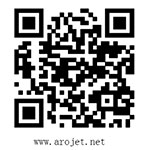

Wireless Connectivity Options for Industrial UV Printers
Wireless Connectivity Options for Industrial UV Printers
Introduction
In today's fast-paced world, wireless connectivity has become an essential feature in various industries. This holds true for the industrial UV printing sector, where the need for seamless communication between printers and devices is crucial. In this article, we will explore the different wireless connectivity options available for industrial UV printers, their benefits, and how they are transforming this industry.
Wi-Fi Connectivity
One of the most common wireless connectivity options for industrial UV printers is Wi-Fi. Wi-Fi allows printers to establish a connection with other devices over a local wireless network. By integrating Wi-Fi capabilities into UV printers, manufacturers enable operators to wirelessly send print jobs from their computers or mobile devices to the printer, eliminating the need for cables and physical connections.
Wi-Fi connectivity offers several advantages for industrial UV printers. Firstly, it provides flexibility, as operators can control and monitor the printing process from a distance. This is particularly beneficial in large-scale printing environments where printers may be located far apart. Additionally, Wi-Fi connectivity enables the integration of cloud-based printing solutions, allowing for easy access to print files and facilitating remote monitoring and management of printers.
Bluetooth Connectivity
Another wireless connectivity option for industrial UV printers is Bluetooth. Bluetooth technology enables short-range wireless communication between devices. Unlike Wi-Fi, which primarily focuses on network connectivity, Bluetooth is designed for establishing direct connections between devices in proximity.
Bluetooth connectivity offers convenience and simplicity for operators using industrial UV printers. It allows for quick and easy pairing with compatible devices, such as smartphones or tablets, enabling wireless printing without the need for a Wi-Fi network. Bluetooth connectivity also supports faster data transfer rates, reducing printing time and improving overall efficiency.
Near Field Communication (NFC)
Near Field Communication (NFC) is a wireless connectivity option gaining popularity in various industries, including UV printing. NFC enables communication between devices by simply bringing them close together, typically a few centimeters apart. This technology eliminates the need for complex setup processes, making it an efficient wireless connectivity option for industrial UV printers.
NFC-enabled industrial UV printers allow operators to initiate printing directly from NFC-enabled devices, such as smartphones or tablets. By simply tapping the device on the printer, users can transfer print jobs seamlessly, reducing the time wasted on manual file transfers. NFC also enhances security, as it requires physical proximity for data transfer, making it less vulnerable to unauthorized access.
Cellular Connectivity
In scenarios where traditional wireless networks may not be available or feasible, cellular connectivity provides an excellent alternative for industrial UV printers. With built-in cellular modules, printers can establish a connection through cellular networks, enabling remote access and control.
Cellular connectivity offers several advantages for industrial UV printers. Firstly, it overcomes the limitations of range, allowing printers to be deployed in remote or mobile printing applications. Operators can send print jobs over cellular networks, eliminating the need for physical presence near the printer. Furthermore, cellular connectivity ensures uninterrupted printing processes, as it is not reliant on the stability of local Wi-Fi networks.
Ethernet Connectivity
Although wireless connectivity is rapidly becoming the norm, Ethernet connectivity remains a reliable and widely used option for industrial UV printers. Ethernet connectivity allows for a wired connection between printers and devices through Ethernet cables.
Ethernet connectivity provides a high level of stability and data transfer speeds, making it ideal for demanding printing environments. UV printers connected via Ethernet experience minimal disruptions and offer consistent performance. Ethernet connectivity also enables easy integration with existing wired networks, ensuring seamless communication between printers and other devices within the network.
Conclusion
Wireless connectivity options have revolutionized the industrial UV printing industry, providing operators with flexibility, convenience, and enhanced productivity. The integration of Wi-Fi, Bluetooth, NFC, cellular, and Ethernet connectivity options in industrial UV printers has transformed the way print jobs are managed, eliminating the need for physical connections and allowing for remote access and control. As technology continues to advance, these wireless connectivity options will play an increasingly vital role in driving the efficiency and effectiveness of industrial UV printers.
 arojet@arojet.com
arojet@arojet.com








